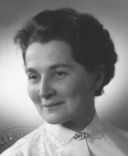Part-Time Work: A Contested Issue
In Austria in 2022, up to half of all women in wage employment worked part time, while only 12.5 per cent of men did: part-time work historically developed as a gendered employment model. While it can allow women to balance paid labour with family responsibilities, it has also been the subject of significant debate and controversy. Historically, Austrian women labour activists across the political spectrum sought to shape the discourse surrounding part-time work. Eventually, they all advocated for its regulation. Only some supported the wide-spread adoption of it, while most saw part-time work as a hindrance to women’s economic opportunities and called for broader policies that could protect women workers from economic and social discrimination.
The origins of part-time work as a formalized employment model can be traced back to the post-World War II period, when industrialized nations sought to integrate more women into the workforce while maintaining traditional family structures. During this time, policymakers and economists recognized that women, and especially married women, were increasingly entering paid employment, but they faced the “double burden” of balancing work with household and caregiving responsibilities. Part-time work was promoted as a solution that would allow women to engage in paid employment without completely stepping away from their roles as primary caregivers.
Women labour activists in Austria responded to the rise of part-time work with a mix of resistance and pragmatism. Their stances were shaped by the interplay of national policies, international labour organizations, and evolving feminist perspectives on work and family. In the 1950s and early 1960s, many women trade unionists in Austria were sceptical of part-time employment. The Austrian Trade Union Federation, dominated by social democratic representatives, and the Chamber of Labour generally viewed full-time employment as the standard. The opposition to part-time work was largely based on concerns that it would weaken women’s bargaining power, reinforce gender wage gaps, and entrench the idea that women were secondary earners.

"Time is money, does part-time mean less money?": An article on part-time work in "Arbeit und Wirtschaft" (1974, no. 11) (Source: AK E-Medien)
At the international level, Austrian activists engaged with organizations such as the International Labour Organization (ILO) and the International Confederation of Free Trade Unions (ICFTU). In these spaces, Austrian trade union women pushed for policies that protected part-time workers while resisting attempts to normalize part-time employment as the default employment option for women.
Conservative trade unionists and politicians, particularly members of the Austrian People’s Party like Grete Rehor, promoted part-time work as a viable option for women who wished to balance employment with caregiving duties. This led to conflicts with social democratic activists, who continued to argue that part-time work should not replace broader policies aimed at reducing working hours for all employees.
The 1970s marked a turning point in the debates over part-time work. While opposition to its expansion remained, Austrian labour activists began to recognize the need to regulate part-time employment to prevent exploitation. Women civil servants and trade unionists conducted research about the realities of part-time employment. Their efforts revealed that part-time work was growing rapidly, and that without adequate legal protections, such workers – overwhelmingly women – were vulnerable to discrimination and economic instability.
By the mid-1970s, as a result of negotiations between the conservatives and social democrats, white-collar part-time employees were included in the Salaried Employees Act. By the late 1970s and into the 1980s, part-time work had become an established feature of women’s employment in Austria, and women labour activists continued to push for improvements in the status of part-time workers. Trade unions and women’s organizations argued that part-time work should be available to both men and women, and that structural changes, in particular better access to childcare, were necessary to support true gender equality in the labour market. However, despite these advances, the economic downturns of the 1980s created new challenges as employers increasingly used part-time work as a cost-cutting strategy, often at the expense of workers’ rights.
How women labour activists in Austria addressed part-time work highlights the tensions that surrounded this gendered employment model. Part-time employment provided opportunities for women to engage in paid work while managing household responsibilities, but it also reinforced gender inequalities and economic vulnerabilities. Austrian women labour activists attempted to create policies that protected part-time workers yet ensured that part-time employment did not become a tool for their exploitation. Although part-time work remains a contested issue, the legacy of Austrian women labour activists serves as a reminder that employment policies must be continuously re-evaluated to ensure equal opportunity for all workers.
Read more here


